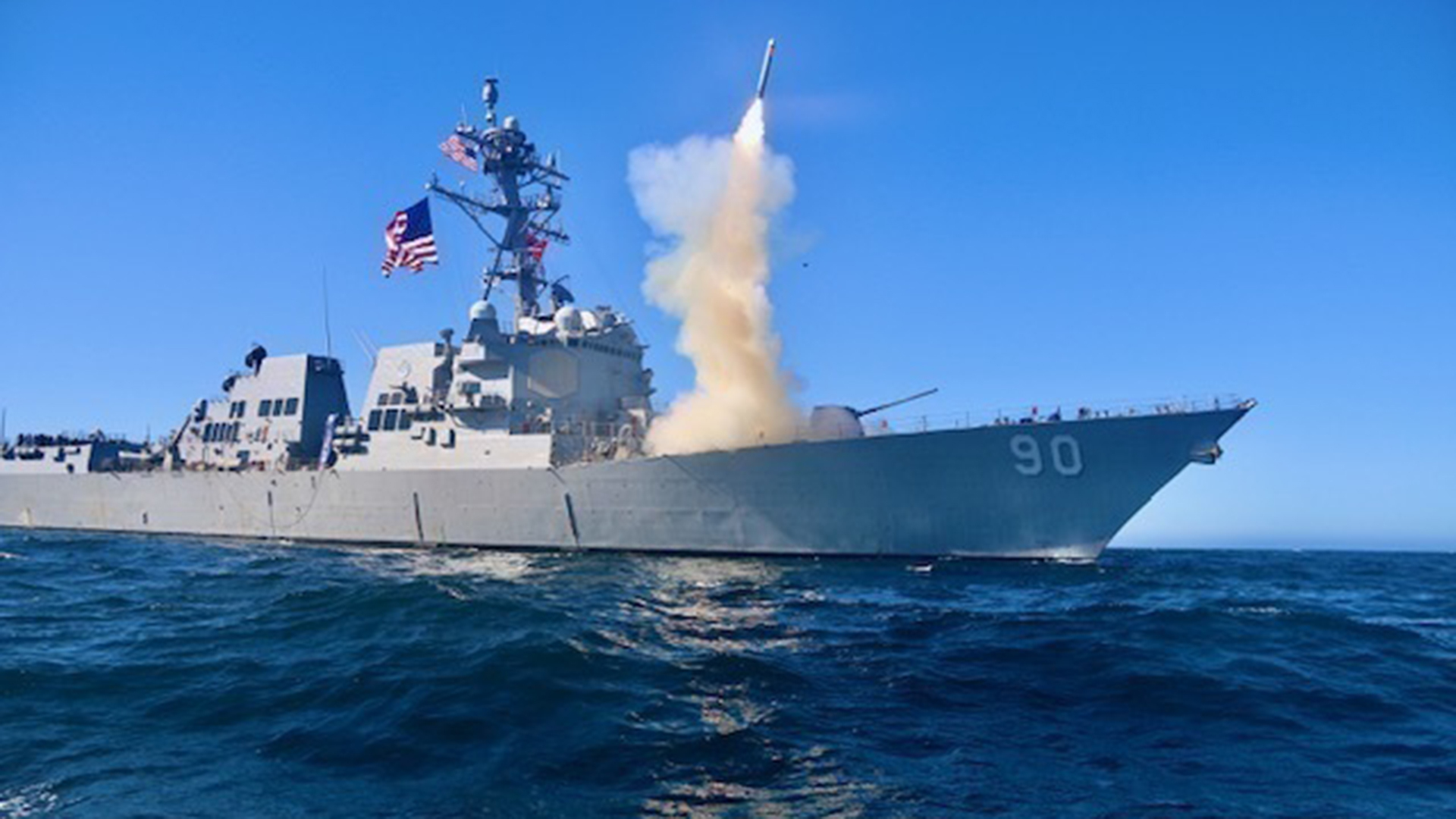

Russia’s invasion of Ukraine has underscored that the U.S. military would need an astronomical amount of ordnance in a war against a near-peer adversary, so the Pentagon has devoted $30.6 billion of its proposed $842 billion budget for the 2024 fiscal year specifically for tactical missiles and other munitions.
That would represent a $5.8 billion increase in funding for munitions from the Pentagon’s fiscal 2023 budget, according to the Defense Department. Of the $30.6 billion, $17.1 billion would go to purchasing tactical missiles, such as Tomahawks; $7.3 billion would fund strategic missiles; and $5.6 billion would buy new ammunition.
The Defense Department plans to spend nearly 50% more on munitions than it requested from Congress five years ago, Deputy Defense Secretary Kathleen Hicks told reporters on Monday.
“Almost one-third of our munitions dollars are specifically for long-range fires to increase procurement and improve the capability of not only hypersonic missiles, but also our most lethal and survivable subsonic weapons, including those we’ve been buying at or near maximum capacity for several years,” Hicks said at a Pentagon news briefing. “This latest budget expands capacity even more and procures the maximum amount of munitions that are most relevant for deterring, and if necessary, prevailing over aggression in the Indo-Pacific, such as the Tomahawk cruise missile and its latest maritime strike variant, the Extend-Range Joint Air-to-Surface standoff missile, or the JASSM-ER; the Long-Range Anti-Ship Missile, or the LRASM; and the anti-ship capable SM-6 missile, among others.”
For fiscal 2024, the Air Force plans to buy 27 LRASMs, and the Navy would buy 91 of the missiles, according to Defense Department budget documents.

The Center for Strategic Studies think tank in Washington, D.C., recently held a wargame that looked at how the U.S. military could defeat a Chinese invasion of Taiwan. One of CSIS’s recommendations was that the Defense Department needs more long-range anti-ship cruise missiles, such as the LRASM and JASSM-ER.
Subscribe to Task & Purpose Today. Get the latest military news, entertainment, and gear in your inbox daily.
Separately, the Center for a New American Security think tank has determined that the number LRASMS that the Navy and Air Force are expected to have by 2027 — when senior military leaders have said China could attempt to invade Taiwan — would be “grossly inadequate” to defeat a Chinese invasion force, Stacie Pettyjohn, director of the defense program at CNAS, told Task & Purpose last year.
The Chinese navy currently has about 350 ships, but it would likely use many commercial ships to transport troops and supplies as part of an invasion of Taiwan, Pettyjohn told Task & Purpose on Monday.
“The US needs enough anti-ship missiles to exhaust and penetrate PLAN [People’s Liberation Army Navy] air defenses, which will attrite a lot of the missiles, as well as to damage or destroy the bulk of the fleet,” Pettyjohn said on Monday. “JASSM-ER isn’t going to be as helpful because it is intended to hit fixed targets not moving ships.”
However, most of the money for tactical missiles would fund new Tomahawks in part because the LRASM and other air-and sea-launched missiles are still being developed so they are not ready for mass production, said senior military and defense officials, who briefed reporters on Friday.
The increase in funding for tactical missiles is not meant to replenish the U.S. military’s stockpile of munitions that have been provided to Ukraine, said a senior defense official, who spoke on condition of anonymity under rules established by the Pentagon.
“These are more for the broader strategy for a higher-end fight,” a senior defense official told reporters on Friday. “They’re not ground munitions. You’ll see Naval Strike Missiles, Standard Missiles, AMRAAM [Advanced Medium-Range Air-to-Air Missiles], things like that.”
All these munitions are intended for the U.S. military, not Ukraine, the senior defense official said, adding that any additional artillery shells, rockets and missiles that the Defense Department might provide to Ukraine would be paid for by supplemental funding.

The Defense Department is also working with Congress and the Office of Management and Budget as part of separate efforts to increase production of weapons systems that the U.S. military has provided to Ukraine, including Patriot missiles and Guided Multiple Launch Rocket System munitions, the senior defense official said.
“Those are, what I would call, works in progress,” said the senior defense official, who explained that increases in funding for such weapons systems are not included in the proposed fiscal 2024 budget.
So far, the U.S. military assistance to Ukraine has included more than 1 million rounds for 155mm howitzers along with High Mobility Artillery Rocket Systems, Ground Launched Small Diameter Bombs, High-speed Anti-radiation missiles, and Harpoon anti-ship missiles, according to the Defense Department.
The U.S. military expects to increase its stocks of tactical missiles and other munitions over the next few years because the defense industry needs time to meet the Defense Department’s needs, the senior defense official said.
“It can’t be done overnight; and in many cases, what we have here is about as fast as we think we can go,” the senior defense official said.
The latest on Task & Purpose
- A major US Army formation just dropped new restrictions on tank names
- How Russia uses US military veterans in its propaganda war against Ukraine
- Jon Bernthal is back as The Punisher in ‘Daredevil: Born Again’
- The Russian military is so low on ammo that troops are reduced to fighting with e-tools
How the World War I Maxim machine gun became a weapon of choice in Ukraine